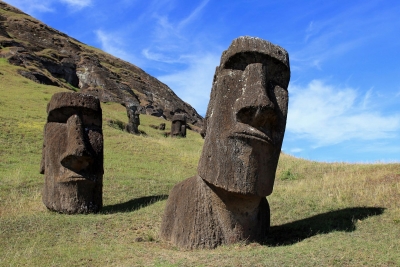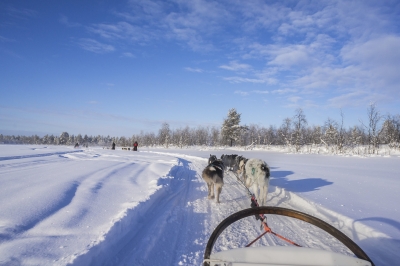What is on Easter Island?

On a small isolated island in the south eastern Pacific are scattered about 1,000 giant statues. Some weigh up to 90 tonnes and are 9.5m (32ft) tall. No one really knows how the Polynesians carved or raised these statues.
The island’s population represents the easternmost settlement of a basically Polynesian subgroup that probably derived from the Marquesas group. The original Rapa Nui vocabulary has been lost except for some mixed Polynesian and non-Polynesian words recorded before the Tahitian dialect was introduced to the decimated population by missionaries in 1864. Today Spanish is generally spoken. In their traditions, the islanders consistently divide themselves into descendants of two distinct ethnic groups, the “Long-Ears” and the “Short-Ears” (see below). Intermarriage is common, and an influx of foreign blood has become increasingly dominant in recent years.
Whereas the aboriginal economy was based on the cultivation of sweet potato, chicken raising, and coastal fishing, the island has shifted to a cash economy based on tourism. The opening of an airport at Mataveri near Hanga Roa has permitted an increasing influx of tourists since the 1960s, and a few small hotels have been built in the village area, where many islanders and settlers from continental Chile also have accommodations in their homes. The ties to continental Chile are strengthened through twice-weekly flights from Santiago and the building of schools, hospitals, and a large community hall for sports and performances. A well-organized Chilean national park system provides guided tours and security for the unique archaeological monuments. Reforestation projects have been successfully initiated, including eucalyptus plantations at Vaitea and coconut groves in Anakena Bay.
Credit : Britannica
Picture Credit : Google
